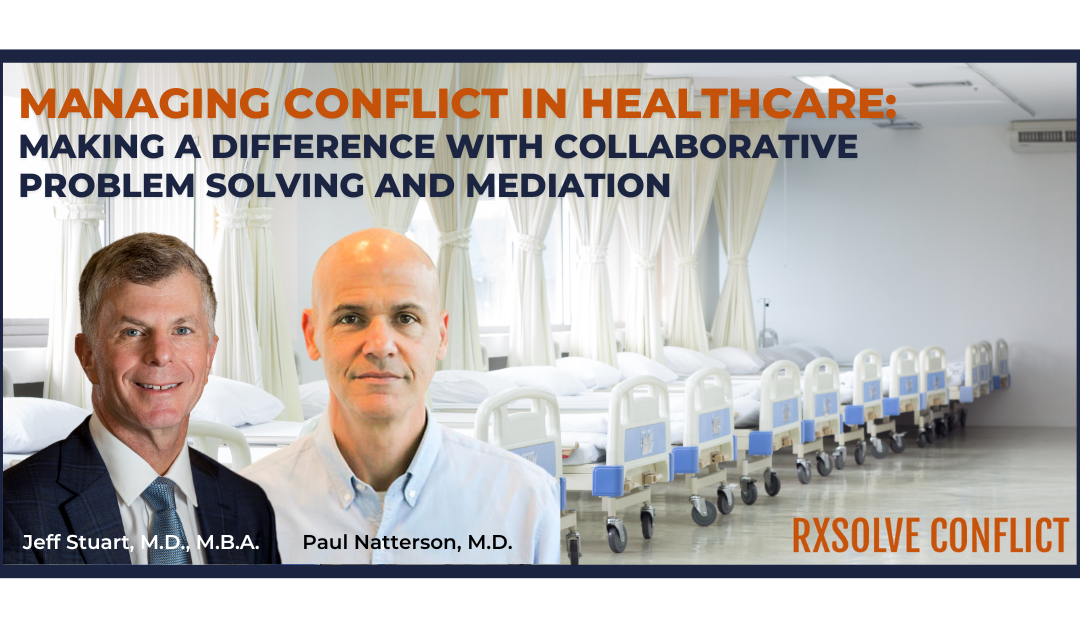by Paul Natterson, M.D., Jeff Stuart, M.D., M.B.A.
Dr. Natterson and Dr. Stuart are co-founders of RxSolve Conflict (rxsolveconflict.com), a firm committed to achieving healthcare excellence through constructive conflict management. In this first article in a series on conflict in healthcare, they discuss the need for new approaches to addressing conflict in this setting and how the understanding-based approach is so well suited and needed.
In the post-pandemic world of healthcare, conflict has become ever more prevalent. Staffing shortages, caregiver burnout, and mounting demands all contribute to this growing challenge. Unfortunately, effective strategies for conflict resolution remain woefully underutilized.
As physician leaders and executives with formal conflict resolution training, we propose an institutional framework for collaborative problem solving techniques including mediation, to positively affect dispute outcomes, preserve relationships, and create a more transparent and supportive culture.
Conflicts in Healthcare
In today’s pressurized world of healthcare, tension and conflict are inevitable. Whether in the hospital or clinic setting we propose an embedded strategy for conflict management at all levels. Conflict may arise between individuals or groups, including
- Providers and caregivers
- Patients/families
- Hospitals (administrators, governing boards, and human resources)
- Medical groups (including businesses, providers, employees, and administrators)
- Hospital Medical Staff Offices/Medical Staff Leadership
- Providers and payers
Some healthcare conflicts lead to traditional litigation involving judge or jury, while physician-hospital disputes often lead to healthcare’s version of the courthouse: judicial review committees, hospital-based hearings, and appellate reviews. Other disputes involving hospital providers, caregivers, and employees wind up in the complex realm of human resources. These traditional paths often result in a costly sideshow consuming time, money, and other resources meant for patient care. In each case, decision making is ultimately relinquished to third party adjudication. Collaborative problem solving including mediation, in which the conflicted parties control both process and decision making is not typically part of the standard approach. Because extraordinarily few health care professionals have mediation or conflict resolution training, such proven approaches are rarely utilized or even considered.
Our Experience
As Chief Medical Officers during the pandemic we have had extensive experience in a multitude of conflict prone areas, thus developing a unique perspective on conflict resolution in healthcare. Only rarely does a dispute begin with malicious intent. Instead, when discussions become difficult, well-intended individuals or groups regularly experience communication breakdown. Rather than engaging in early constructive dialogue, parties respond with avoidant or combative behavior leading to fractured relationships, damaged institutional culture and compromised patient safety. At this point attorneys are often called and the costly path to litigation begins. The opportunity for a more reasoned and less confrontational approach is lost.
A Path Forward
We have all chosen to work in an environment where wellness, health, and healing are fundamental priorities. Rather than allowing communication breakdown when conflict develops, collaborative problem solving should have a defined early role. Communication training and coaching can set the stage for collaborative techniques such as initial one on one meetings and facilitated informal discussions among parties involved. When necessary this would include formal or informal mediation–conflict resolution facilitated by a neutral third party–to identify and protect the interests of all parties. Such approaches, in stark contrast to litigation, allow those involved to maintain control and not yield decision making to a judge or jury. Relationships are maintained or even strengthened in the process, thus reinforcing the organization’s culture of safety and productive communication.
In 2009 The Joint Commission recognized the need for such frameworks for conflict resolution as a key component of providing high quality care and creating a culture of safety. Leadership Standard LD.02.04.01 requires that “the hospital manages conflict between leadership groups to protect the quality and safety of care”. Fourteen years later such systems for dispute resolution remain largely absent.
Collaborative problem solving, including mediation, allows all parties to walk away with mutually acceptable outcomes. By saving time and money, and hopefully creating a new sense of goodwill, such an approach allows us to get back to the business of healthcare. We look forward to working with our colleagues to increase the awareness and implementation of such conflict resolution strategies.
References:
Debra Gerardi R.N, M.P.H., J.D., and Charity Scott J.D., A Strategic Approach for Managing Conflict in Hospitals: Responding to the Joint Commission Leadership Standard, Parts 1 and 2, 37 Joint Commission Journal on Quality and Patient Safety 70 (2011).
Haavi Morreim, J.D., P.H.D., American Health Lawyers Association, Member Forum (January 2014).

